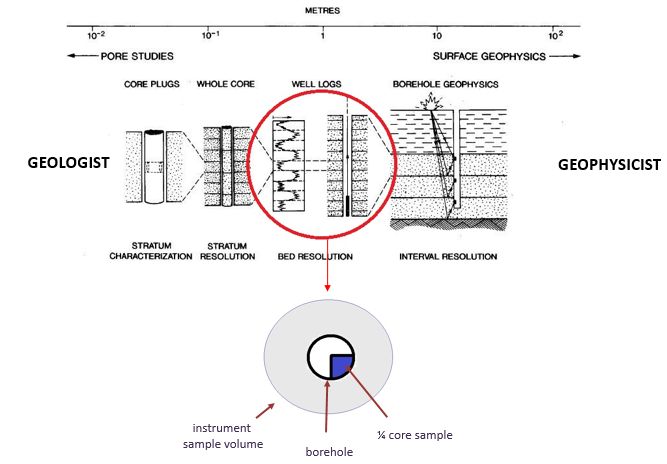<h4>Borehole Geophysics in Universities</h4>
Should more attention be given to borehole geophysics in undergraduate geology and/or geophysics courses?
<h4>Borehole Geophysics</h4>
Borehole Geophysics (also known as geophysical logging, downhole logging, wireline logging or well logging) is an increasingly common technique employed in today’s mining, exploration, geotechnical, groundwater and environmental markets. The need for in situ data for predictable, automated mining can only lead to an increase of data required from the proposed mining area.
(h4>Where does borehole geophysics fit in?</h4>
Geophysical logging is one of the most common techniques linking the geologist with the surface geophysicist
Geophysical logs are reliable in situ electronic measurements made in the borehole. The reliability and precision of the measurements have increased over many decades of use and the evolution of sensor and electronic developments. So why use these methods:
- The geophysical instruments measure a volume of the rock around the borehole significantly greater than the borehole itself.
- The geologists sample volume is the borehole itself – in the form of cuttings, core or core plugs.
- The data is rapidly acquired and cost effective.
- The drilling of the borehole is probably the most expensive process, so maximise your data from the borehole.
- The results are available at the borehole, for prompt decision making.
- The data is not prone to the visual errors of geologists.
<h4>Undergraduate Geology Courses</h4>
My own experience during university was a ten minute section of a three hour practical on a gamma log and that was it the three years? Meeting the rig geologist on a regular basis over many years make me wonder if the level of borehole geophysics teaching has increased much over the years.
<h4>Keeping Course Content Up to Date</h4>
Where we have found that borehole geophysics is covered, the course content is not kept up to date with modern methods or legislation changes. Neutron logging with a sealed Americium/Beryllium source is a good example. Often an absolute must in the groundwater industry because I cannot place my screens accurately without them but unaware of the current stringent anti-terror legislation and the cost of compliance. One of the main principles of radiation use is “ALARA” – AS LOW AS REASONABLY ACHEIVABLE” – or if you can get the same data from a lower activity radiation method or a non-radioactive method – use this method.
So for groundwater screen placement, why not use the focussed resistivity and dual induction/conductivity methods. Both are non-radioactive. Both respond to physical properties of porosity, groundwater quality and mineralogy.
Or do you think the education, initial and ongoing, is the responsibility of the logging contractor?

